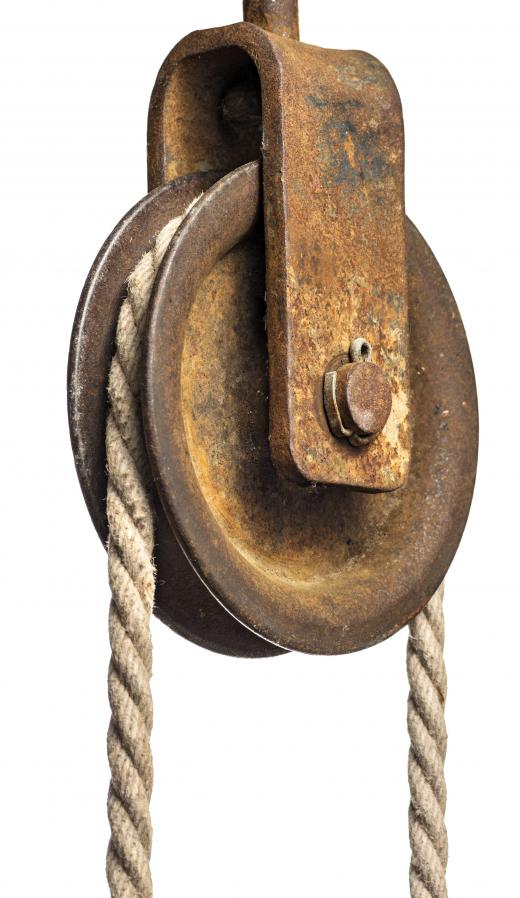A single pulley is a device composed of a wheel on an axle over which a rope, cord, or similar implement is looped. It is intended to change the direction of force applied to one end of the rope or to accomplish a similar purpose involving a change in the direction of force. A single pulley, for instance, may exist in some elevated position with a weight on one end of the rope that is looped over the pulley. A person standing next to the weight could pull the free end of the rope downward, thereby causing the weight to rise. The force is applied downward, but the weight rises because the pulley reverses the direction of force.
The single pulley is the simplest type of a wide variety of different types of pulleys. There are many different types of compound pulleys that can be used to further adjust the direction of force or to more precisely manage the movement of an object. Efficient and clever placement of a system of pulleys can make it much easier to apply the force necessary to accomplish a given end. In some cases, counterweights are also used in various places throughout a pulley system to increase the ease with which force is redistributed and redirected.

A single pulley can be used in two primary ways. A fixed single pulley is a setup in which the pulley is solidly attached to a surface, such as a ceiling. While heavy objects can be lifted just by pulling one end of the rope, doing so requires more force than would be necessary to lift the object without the pulley. A movable pulley, on the other hand, is not secured to a surface but moves with the load being lifted. This setup reduces the amount of force needed, as one end of the rope itself is presumably attached to a fixed surface and accordingly supports some of the weight of the load.

It is generally more effective to use a system of pulleys than to use a single pulley. Using a system of pulleys results in better weight distribution and more precise control over the final direction of the applied force. As in any complex system, however, introducing more parts introduces more opportunity for damage and error that can render the entire system inoperable. Greater complexity also leads to more difficulty in setting up and in moving the system when needed. The single pulley is used largely because of its simplicity.
